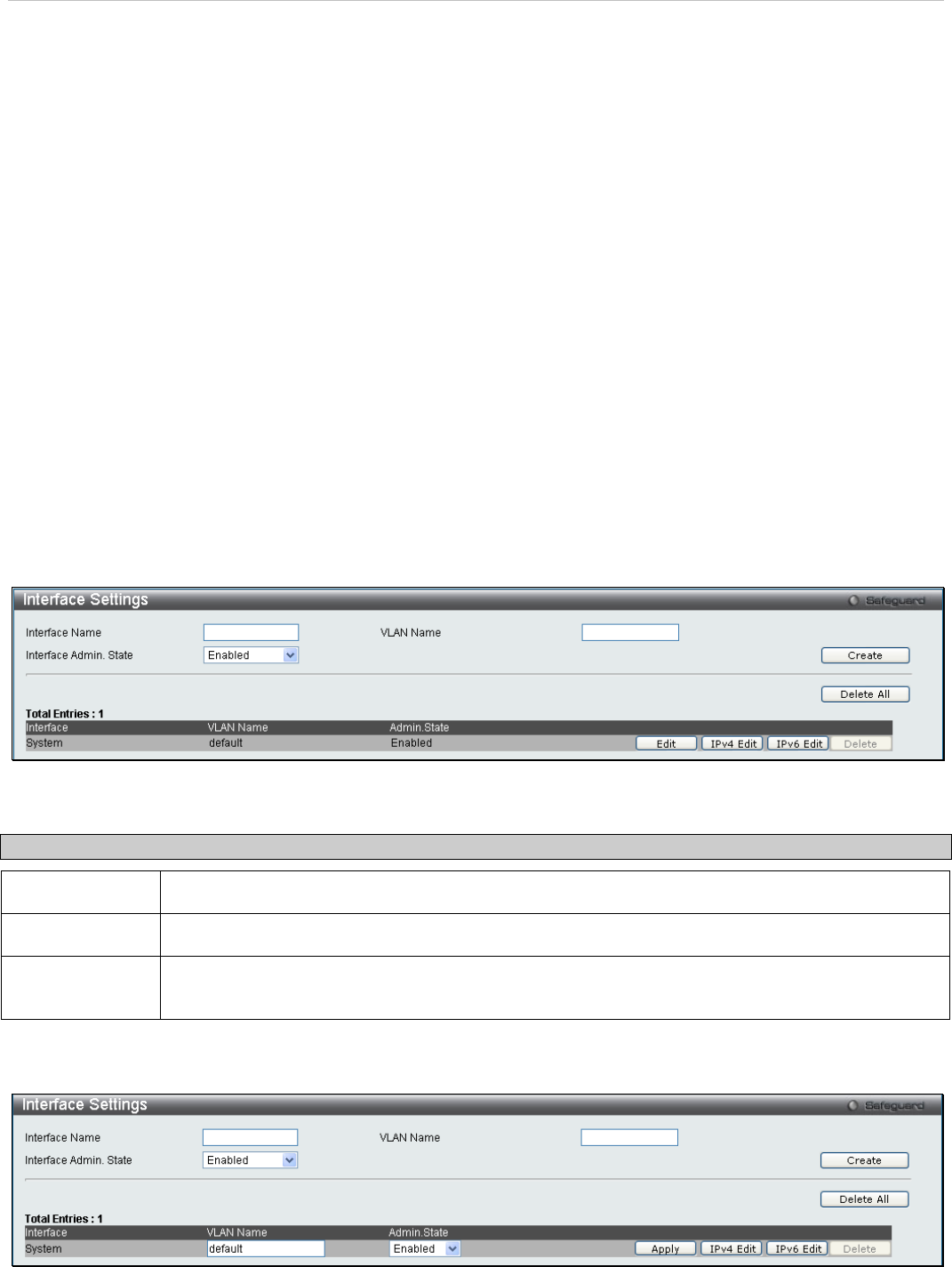
DGS-3700-12/DGS-3700-12G Series Layer 2 Gigabit Ethernet Switch User Manual
11
Setting the Swith’s IP Address using the Console Interface
Each Switch must be assigned its own IP Address, which is used for communication with an SNMP network manager
or other TCP/IP application (for example BOOTP, TFTP). The Switch’s default IP address is 10.90.90.90. You can
change the default Switch IP address to meet the specification of your networking address scheme.
The IP address for the Switch must be set before it can be managed with the Web-based manager. The Switch IP
address can be automatically set using BOOTP or DHCP protocols, in which case the actual address assigned to the
Switch must be known. The IP address may be set using the Command Line Interface (CLI) over the console serial
port as follows:
Starting at the command line prompt, enter the commands config ipif System ipaddress
xxx.xxx.xxx.xxx/yyy.yyy.yyy.yyy, where the x’s represent the IP address to be assigned to the IP interface named
System and the y’s represent the corresponding subnet mask.
Alternatively, you can enter config ipif System ipaddress xxx.xxx.xxx.xxx/z, where the x’s represents the corresponding
number of subnets in CIDR notation.
The IP interface named System on the Switch can be assigned an IP address and subnet mask which can then be
used to connect a management station to the Switch’s Telnet or Web-based management agent.
The system message Success indicated that the command was executed successfully. The Switch can now be
configured and managed via Telnet and the CLI or via the Web-based management agent using the above ip address
to connect to the Switch.
Interface Settings
This window allows the user to create and configure interfaces on the Switch.
To view this window, click Configuration > Interface Settings as shown below:
Figure 2 - 5 Interface Settings window
The following parameters can be configured:
Parameter Description
Interface Name
Enter the name you wish to give the IP Interface.
VLAN Name
Enter the name of the VLAN corresponding to the System interface.
Interface Admin.
State
Allows the user to enable or disable the interface administration state.
Click Create to create the entry or Delete All to delete all the current IP Interface entries.
To edit the VLAN Name or Admin. State click the IPv4 Edit or IPv6 Edit button as shown below.
Figure 2 - 6 Interface Settings Edit window


















